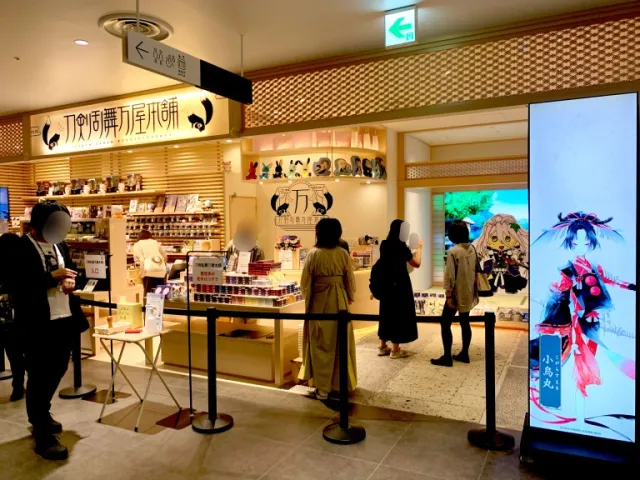
The game/anime franchise about anthropomorphized Japanese swords is offering a chance to see some real ones.
You can find all sorts of plushies, pins, and other trinkets at Touken Ranbu Yorozuyahonpo, the specialty shop dedicated to video game/anime franchise Touken Ranbu. But since Touken Ranbu is a series about historical samurai swords getting reincarnated as handsome men, sometimes the store has actual historical samurai swords.
No, they’re not for sale, but they are on display for visitors to admire, and so we recently made our way to the Touken Ranbu Yorozuyahonpo inside Tokyo’s Shibuya Parco complex to see two very special new arrivals for ourselves.
Good things often come in small packages, and sometimes that goes for swords too. So while the katana on top is the flashier weapon, let’s start with the wakizashi short sword underneath it, because it’s a Muramasa sword.
Muramasa was actually the name of a line of swordsmiths who produced some of the finest swords Japan has ever seen (and also among the most feared, as some developed reputations as “cursed demon swords”). This particular wakizashi was forged by the second-generation Muramasa, considered the most skillful of the six successors, and was made in the late Muromachi period (which ended in 1573).
It’s common for Japanese swordsmiths to “sign” their work by engraving their name into the hilt, and sure enough, you can see “Muramasa” (村正) here.
Speaking of the hilt, the ones on Muramasa swords have a unique shape that’s come to be called “tanagobara,” or “fish belly,” because their rounded taper resembles a plump fish.
Japanese swords are very much works of art, and nowhere is that more apparent than in the hamon, or tempering line.
Appraisers and scholars refer to the section between the line as the edge as the ha, or while the area between the line and the sword’s unsharpened inner curve is the jigane.
▼ The ha (刃) has a lighter color than the jigane (地鉄).
Many Muramasa swords have a blocky, repeating pattern to their hamon, referred to as hakoba (“box edge”), which can be clearly seen on this wakizashi.
The sword also has what’s called a jizoboshi pattern near its tip, which resembles the shape of the protective Buddha statues (jizo) seen at temples and along roadsides in Japan, often outfitted with a round cloth cap (boshi).
▼ The hamon (刃文) curving into the jizoboshi (地蔵帽子)
With that, let’s lift our gaze up to the grandiose katana hanging above the Muramasa wakizashi.
In contrast to the Muramasa, this is a mumei, or “uninscripted” sword, meaning that no name is engraved on the hilt. However, appraisers believe that this katana was likely forged by Shimada Hirosuke, another smith of the late Muromachi period and son of Shimada Gisuke, the blacksmith who made the Otegine, one of the Three Great Spears of Japan.
▼ “Master-level samurai weaponsmithing runs in our family” is one of the cooler things a father and son can say.
With no inscription to show off on the hilt’s metal, the sword is displayed with its full grip. It’s not only longer than the Muramasa wakizashi, but has a much more dynamic curve. What makes it really dramatic, though, is what’s on the flat of the blade.
That’s an image of the Kurikara, sword of the deity Fudo Myoo (also known as Acala), wrapped in flame with a dragon coiled around it. Aside from the cool-factor of having a sword on your sword, Fudo Myoo is worshipped as a destroyer of evil, and so the image of the Kurikara here is likely meant as a ward against misfortune and dark forces.
Moving on to the unsigned (but presumably Shimada-made) katana’s hamon, it’s narrower and much less starkly colored than the Muramasa’s, with the ha section having almost a milky whiteness to it.
The line itself is also more irregular and undulating, like a choppy wave or spark of lightning.
Since the swords are displayed right there in the store, no admission fee or purchase is required to see them, and both the Muramasa and Shimada swords will be on display until November 7.
Related: Touken Ranbu Yorozuyahonpo
Photos ©SoraNews24
● Want to hear about SoraNews24’s latest articles as soon as they’re published? Follow us on Facebook and Twitter!
[ Read in Japanese ]
Follow Casey on Twitter, where he thinks every shopping mall should have medieval weaponry on display.
[ Read in Japanese ]

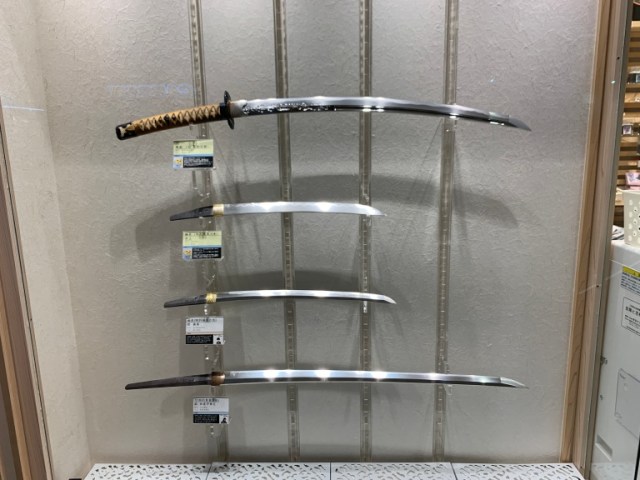
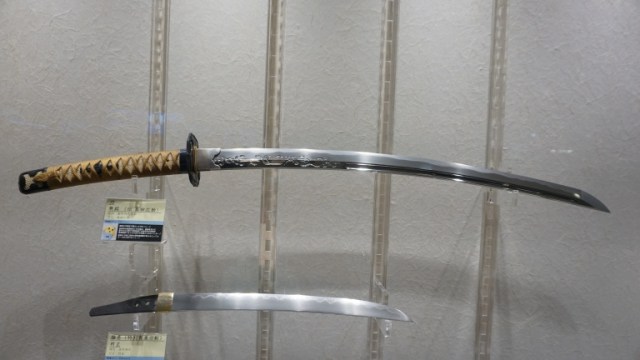
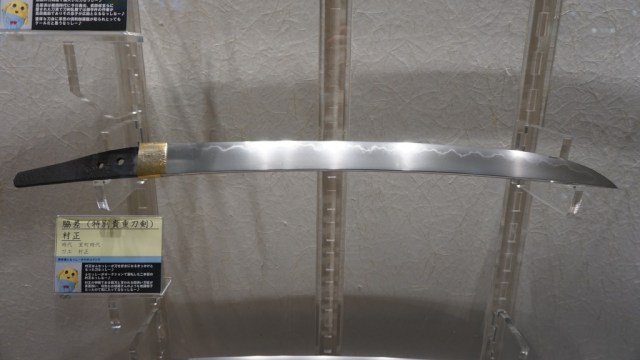
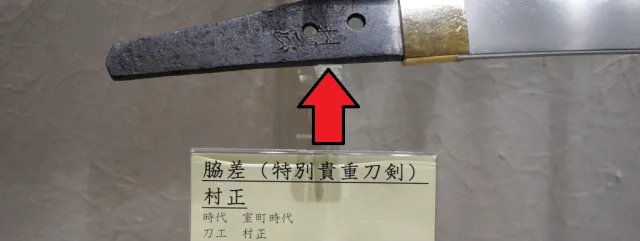
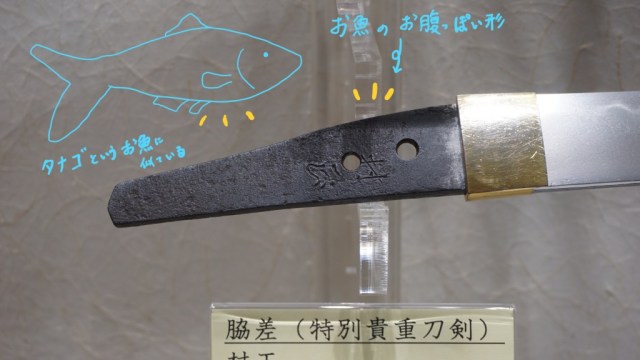
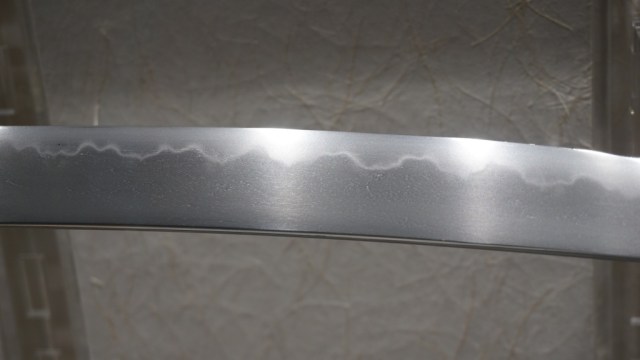
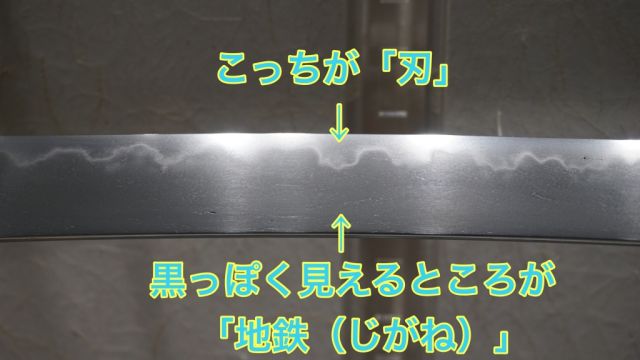
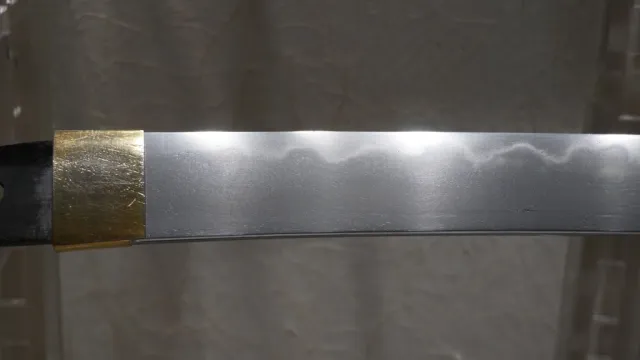
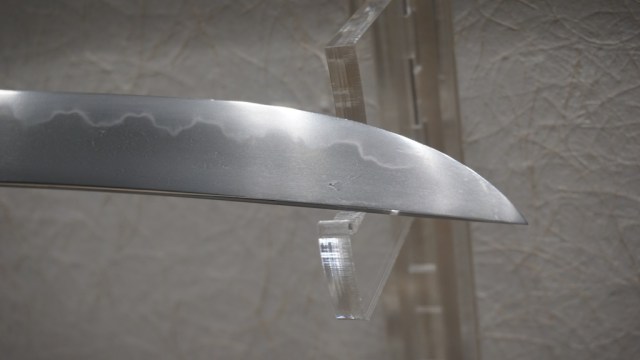
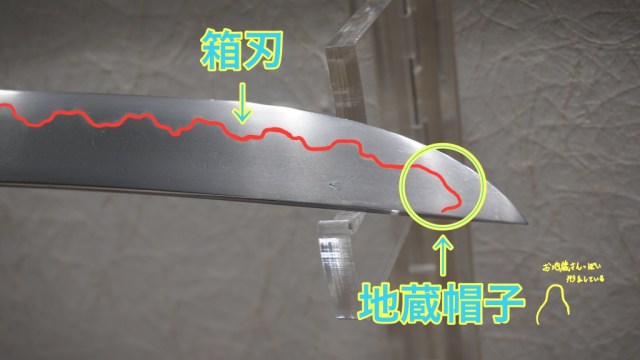
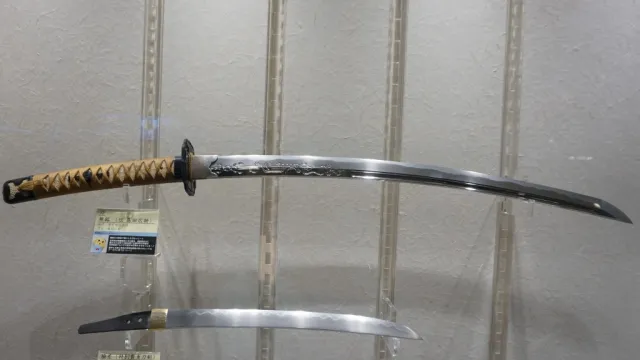
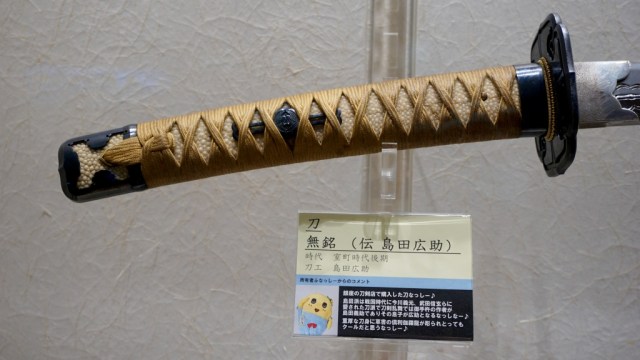

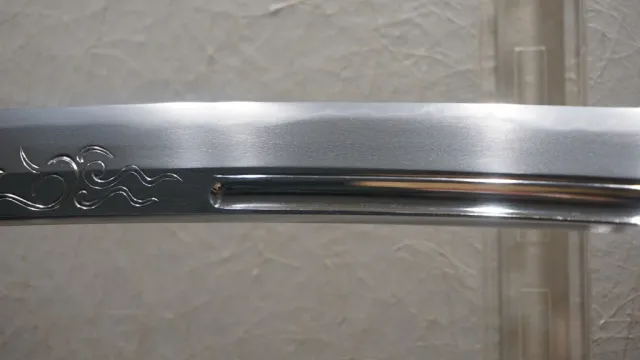
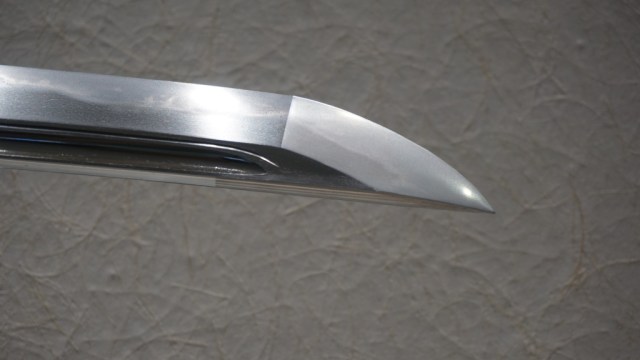
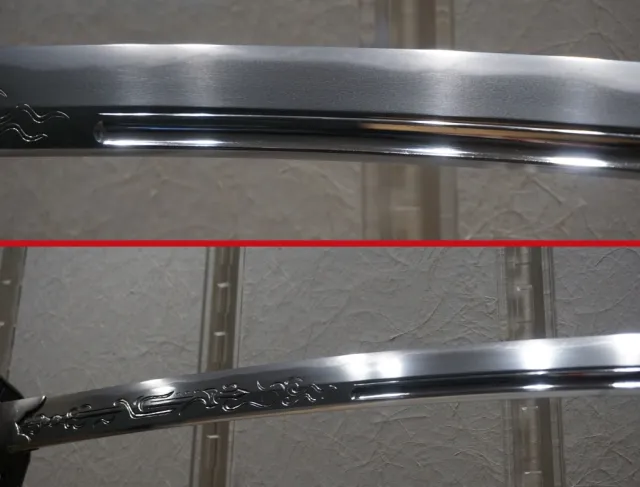
 Dojigiri, the millennium-old katana said to have slain a demon, is now on display in Tokyo【Pics】
Dojigiri, the millennium-old katana said to have slain a demon, is now on display in Tokyo【Pics】 This hotel has one of the coolest katana collections in Japan, and admission is totally free【Pics】
This hotel has one of the coolest katana collections in Japan, and admission is totally free【Pics】 Legendary crescent moon katana, one of Japan’s Five Swords Under Heaven, now on display in Tokyo
Legendary crescent moon katana, one of Japan’s Five Swords Under Heaven, now on display in Tokyo Scholars confirm first discovery of Japanese sword from master bladesmith Masamune in 150 years
Scholars confirm first discovery of Japanese sword from master bladesmith Masamune in 150 years Real-life Rurouni Kenshin reverse-blade katana, forged by master swordsmith, now on display【Pics】
Real-life Rurouni Kenshin reverse-blade katana, forged by master swordsmith, now on display【Pics】 Seaside scenery, history, and so many desserts on Yokohama’s Akai Kutsu【Japan Loop Buses】
Seaside scenery, history, and so many desserts on Yokohama’s Akai Kutsu【Japan Loop Buses】 Foreigner’s request for help in Tokyo makes us sad for the state of society
Foreigner’s request for help in Tokyo makes us sad for the state of society Should you add tartar sauce to Japanese curry rice? CoCo Ichi makes diners an unusual offer
Should you add tartar sauce to Japanese curry rice? CoCo Ichi makes diners an unusual offer Ghibli Park now selling “Grilled Frogs” from food cart in Valley of Witches
Ghibli Park now selling “Grilled Frogs” from food cart in Valley of Witches Japanese city loses residents’ personal data, which was on paper being transported on a windy day
Japanese city loses residents’ personal data, which was on paper being transported on a windy day Akihabara pop-up shop sells goods made by Japanese prison inmates
Akihabara pop-up shop sells goods made by Japanese prison inmates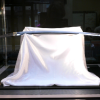 Amazing exhibition of Japan’s legendary “cursed katana” is going on right now【Photos】
Amazing exhibition of Japan’s legendary “cursed katana” is going on right now【Photos】 Yokohama restaurant serves fried axolotl, along with giant isopod, camel, and crocodile
Yokohama restaurant serves fried axolotl, along with giant isopod, camel, and crocodile We tried Korea’s way-too-big King Tonkatsu Burger at Lotteria 【Taste Test】
We tried Korea’s way-too-big King Tonkatsu Burger at Lotteria 【Taste Test】 Larger than life Doraemon doll will delight fans, terrify pets and small children
Larger than life Doraemon doll will delight fans, terrify pets and small children McDonald’s new Happy Meals offer up cute and practical Sanrio lifestyle goods
McDonald’s new Happy Meals offer up cute and practical Sanrio lifestyle goods Japanese ramen restaurants under pressure from new yen banknotes
Japanese ramen restaurants under pressure from new yen banknotes French Fries Bread in Tokyo’s Shibuya becomes a hit on social media
French Fries Bread in Tokyo’s Shibuya becomes a hit on social media Studio Ghibli releases new action figures featuring Nausicaä of the Valley of the Wind characters
Studio Ghibli releases new action figures featuring Nausicaä of the Valley of the Wind characters Red light district sushi restaurant in Tokyo shows us just how wrong we were about it
Red light district sushi restaurant in Tokyo shows us just how wrong we were about it New private rooms on Tokaido Shinkansen change the way we travel from Tokyo to Kyoto
New private rooms on Tokaido Shinkansen change the way we travel from Tokyo to Kyoto Tokyo Tsukiji fish market site to be redeveloped with 50,000-seat stadium, hotel, shopping center
Tokyo Tsukiji fish market site to be redeveloped with 50,000-seat stadium, hotel, shopping center Beautiful Ghibli sealing wax kits let you create accessories and elegant letter decorations【Pics】
Beautiful Ghibli sealing wax kits let you create accessories and elegant letter decorations【Pics】 Studio Ghibli releases Kiki’s Delivery Service chocolate cake pouches in Japan
Studio Ghibli releases Kiki’s Delivery Service chocolate cake pouches in Japan New definition of “Japanese whiskey” goes into effect to prevent fakes from fooling overseas buyers
New definition of “Japanese whiskey” goes into effect to prevent fakes from fooling overseas buyers Our Japanese reporter visits Costco in the U.S., finds super American and very Japanese things
Our Japanese reporter visits Costco in the U.S., finds super American and very Japanese things All-you-can-drink Starbucks and amazing views part of Tokyo’s new 170 meter-high sky lounge
All-you-can-drink Starbucks and amazing views part of Tokyo’s new 170 meter-high sky lounge More foreign tourists than ever before in history visited Japan last month
More foreign tourists than ever before in history visited Japan last month New Pokémon cakes let you eat your way through Pikachu and all the Eevee evolutions
New Pokémon cakes let you eat your way through Pikachu and all the Eevee evolutions Disney princesses get official manga makeovers for Manga Princess Cafe opening in Tokyo
Disney princesses get official manga makeovers for Manga Princess Cafe opening in Tokyo Sales of Japan’s most convenient train ticket/shopping payment cards suspended indefinitely
Sales of Japan’s most convenient train ticket/shopping payment cards suspended indefinitely Sold-out Studio Ghibli desktop humidifiers are back so Totoro can help you through the dry season
Sold-out Studio Ghibli desktop humidifiers are back so Totoro can help you through the dry season Japanese government to make first change to romanization spelling rules since the 1950s
Japanese government to make first change to romanization spelling rules since the 1950s Ghibli founders Toshio Suzuki and Hayao Miyazaki contribute to Japanese whisky Totoro label design
Ghibli founders Toshio Suzuki and Hayao Miyazaki contribute to Japanese whisky Totoro label design Doraemon found buried at sea as scene from 1993 anime becomes real life【Photos】
Doraemon found buried at sea as scene from 1993 anime becomes real life【Photos】 Tokyo’s most famous Starbucks is closed
Tokyo’s most famous Starbucks is closed One Piece characters’ nationalities revealed, but fans have mixed opinions
One Piece characters’ nationalities revealed, but fans have mixed opinions We asked a Uniqlo employee what four things we should buy and their suggestions didn’t disappoint
We asked a Uniqlo employee what four things we should buy and their suggestions didn’t disappoint Princesses, fruits, and blacksmiths: Study reveals the 30 most unusual family names in Japan
Princesses, fruits, and blacksmiths: Study reveals the 30 most unusual family names in Japan Amazing exhibition of Japan’s legendary “cursed katana” is going on right now【Photos】
Amazing exhibition of Japan’s legendary “cursed katana” is going on right now【Photos】 Real-life Rurouni Kenshin reverse-blade katana now on display in Tokyo【Photos】
Real-life Rurouni Kenshin reverse-blade katana now on display in Tokyo【Photos】 Cosplay-friendly interior design — Japanese cosplayer shows off crazy apartment entryway
Cosplay-friendly interior design — Japanese cosplayer shows off crazy apartment entryway Japan’s legendary Brother Katana might not be brothers after all? Investigating the mystery【Pics】
Japan’s legendary Brother Katana might not be brothers after all? Investigating the mystery【Pics】 Real-life Rurouni Kenshin reverse-blade sword to be displayed in Tokyo
Real-life Rurouni Kenshin reverse-blade sword to be displayed in Tokyo Demon-slaying Dojigiri, one of Japan’s Five Swords Under Heaven, now on display at Kasuga Shrine
Demon-slaying Dojigiri, one of Japan’s Five Swords Under Heaven, now on display at Kasuga Shrine Real-life Rurouni Kenshin katana forged based on sword of series’ most merciless villain【Photos】
Real-life Rurouni Kenshin katana forged based on sword of series’ most merciless villain【Photos】 Swords of famous samurai reborn as beautiful kitchen knives from Japan’s number-one katana town
Swords of famous samurai reborn as beautiful kitchen knives from Japan’s number-one katana town Is spending 248,380 yen (US$1,840) on an anime boy doll a wise choice? Our fangirl finds out!
Is spending 248,380 yen (US$1,840) on an anime boy doll a wise choice? Our fangirl finds out! Jewelry forged with Japanese sword-making techniques are a cut above the rest
Jewelry forged with Japanese sword-making techniques are a cut above the rest First details and steamy main cast revealed for live-action Touken Ranbu film
First details and steamy main cast revealed for live-action Touken Ranbu film Japan is running out of swordsmiths, and a strict apprenticeship requirement is a big reason why
Japan is running out of swordsmiths, and a strict apprenticeship requirement is a big reason why Samurai fashion guide – Should you wear your sword blade-up or blade-down?
Samurai fashion guide – Should you wear your sword blade-up or blade-down? One Piece anime katanas recreated as exquisite letter openers by Japan’s swordsmith legacy heirs
One Piece anime katanas recreated as exquisite letter openers by Japan’s swordsmith legacy heirs Touken Rambu chocolates are a treat for anime fans and a test of how well you know the characters
Touken Rambu chocolates are a treat for anime fans and a test of how well you know the characters
Leave a Reply